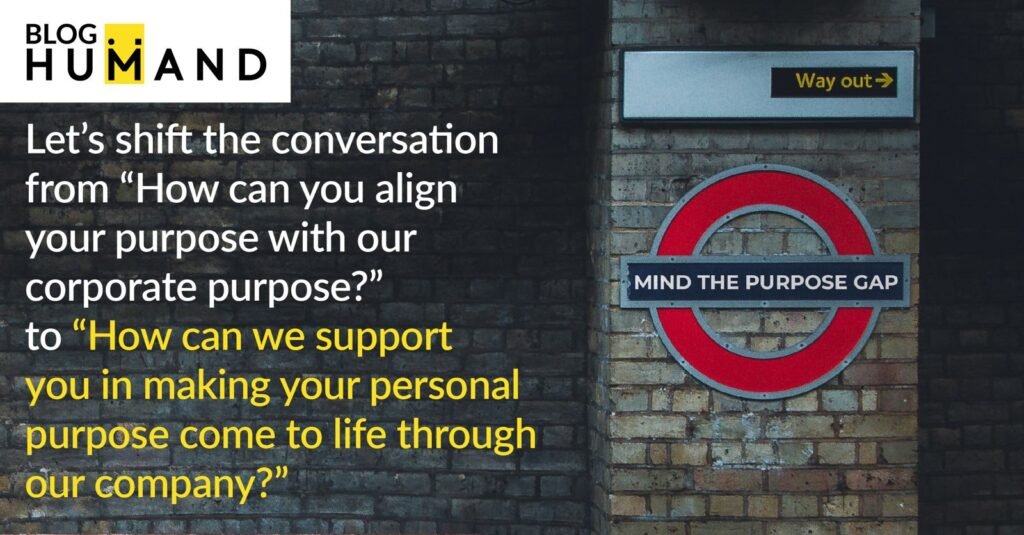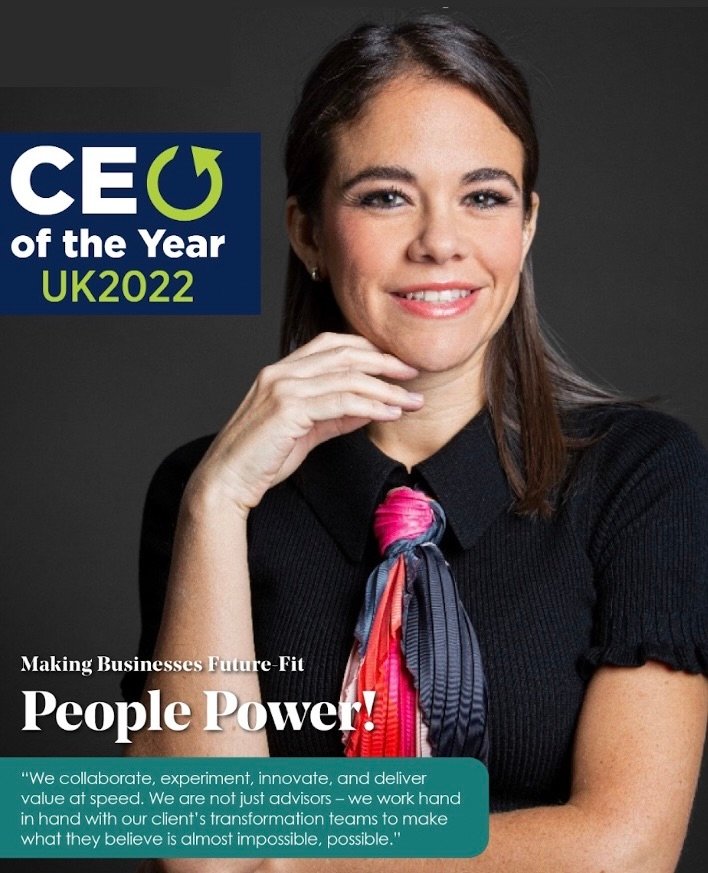By Erika Giorgana- CEO & Founder Humand
Standing on the bustling platform of London’s Warwick Station, surrounded by the rhythmic hum of commuters, my mind dwelled on a recent encounter with one of our clients, a leader from a major financial services company. During one of our meetings, he confided, “We’ve championed ourselves as a purpose-led organization, with a clear and inspiring company purpose statement. However, most employees merely shrug their shoulders and carry on with their tasks. It doesn’t seem to make any real difference to them in their day-to-day routines.”
This dilemma brought me back to the crucial question: What lies behind this troubling gap that often exists between the organizational purpose and the individual employee’s purpose? On one hand, it’s heartening to witness the growing number of companies defining their organizations purpose.
According to a recent Humand survey, 86% of leaders proudly label their organizations as ‘purpose led.’ This trajectory aligns with our vision at Humand. However, the reality remains stark: employees continue to feel emotionally detached from their jobs, increasingly yearning for a sense of purpose at work. So, where do organizations commonly stumble, and how can they bridge this purpose gap?
Well, I believe it should begin by recognizing the pitfalls that organizations often encounter in the pursuit of embedding organizational purpose as a fundamental element of their corporate strategy.
Pretending Organizational Purpose is the Same as People’s Purpose:
An organization’s purpose and an individual’s purpose are not identical. Each person has their own life purpose. While people do want their work to play a significant role in that, aligning personal purpose with the organization’s purpose is different from assuming that people’s purpose should become the organizational purpose.
Companies should encourage individuals to discover their personal purpose and provide them with opportunities to bring their purpose to life at work. Ultimately, any interest in the company’s purpose and the desire to positively impact the world stems from that personal sense of purpose. A recent survey conducted by McKinsey revealed that only 15% of frontline managers and staff felt they were living their purpose at work. The reason? Leaders tend to focus solely on communicating organizational purpose, while employees need to feel that the organizational purpose connects to their personal purpose.
Companies must shift the conversation from “How can you align your purpose with our corporate purpose?” to “How can we support you to make your personal purpose come to life through our company?” When employees see how their values, aspirations, and motivations align with the work they do, engagement soars.

Dismissing Personal Purpose conversations because it is ‘Soft’:
A significant problem within organizations arises from the fact that most leaders often shy away from personal conversations about purpose, considering them messy, emotive, and inherently subjective. Few leaders feel prepared or interested in discussing people’s emotions, beliefs, motivators, and dreams. This reluctance results not only in a gap between what employees desire and what they experience at work but also significantly impacts people’s development and well-being at work.
A recent survey by the American Institute of Stress found that 80% of workers feel stress on the job, with nearly half saying they need help in learning how to manage stress. Moreover, according to Gallup’s latest Global Workplace report, only 20% of employees worldwide are actively engaged in their work. These statistics underscore the critical importance of fostering personal and deep emotional conversations at work.
Leaders must shift the balance from having only performance-related and results-driven conversations to having more human conversations, such as “What aspects of your life do you find most fulfilling?”, “What are your interests and dreams?”, “What are your strengths and motivators?” Asking these questions can help leaders get to know people better and find ways to align people’s purpose with the organization.
Not Being Authentic and Bold in Embedding Organizational Purpose:
A well-intentioned organizational purpose with no actions derived remains a mere marketing campaign. To bridge the gap, leaders should adopt a purpose-driven mindset, becoming ambassadors and grounding the purpose within the organizational strategy and daily operations. A great example of a company that integrated its organizational purpose into everything they do is Unilever. Since 2009, Unilever openly declared that they are determined to prove that a Purpose-Led organization delivers superior performance. All their strategic choices and actions are aligned with their organizational Purpose, “To make sustainable living commonplace.” For Unilever, Purpose starts with the individual, and that’s why almost 60,000 employees had ‘discovered their own purpose’ through a successful leadership program. At the workshop, employees reflect on their own motivations, passions, and skills and develop an individualized ‘future-fit development plan’. In 2020, 92% of employees who had attended a discover-your-purpose workshop reported having jobs that inspired them to go the extra mile.
Organizations must ensure they are committed and prepared to deliver (before claiming to change the world). To bridge the gap between organizational purpose and people’s purpose, companies need to encourage Personal Purpose Discovery. This means creating opportunities for employees to explore and define their personal purpose within the context of their work. This can involve workshops, one-on-one conversations, and self-assessment tools like Pitribe, that help individuals understand their values, strengths, skills, and passions.
By avoiding these pitfalls and implementing these actions, organizations can effectively bridge the gap between organizational and personal purpose, fostering a more engaged, motivated, and purpose-driven workforce.
So, leaders everywhere who are reading this blog… Please Mind the Gap!



